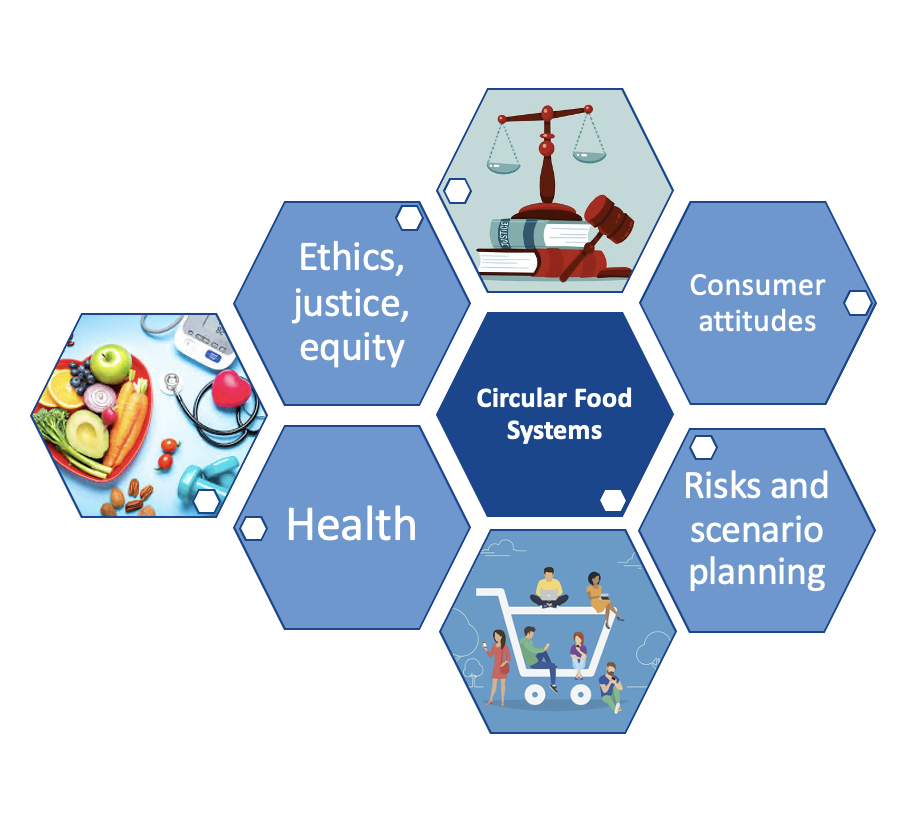Understanding Society to Reduce Food Losses and Waste
Turning waste into value: Exploring sustainable and ethical food practices
Reducing food loss and waste is not only a technical challenge — it requires seeing the food system as a whole. Within PLENTY, Work Package 3 Society (WP3) examines the social, ethical, and health-related questions that arise when transforming food side streams into new, sustainable products such as fertilizers, pesticides, food ingredients, and products.

A systems view of food and society
Food is deeply cultural, and habits are shaped by norms, values, and perceptions. Within PLENTY how losses, waste, and side streams occur are being mapped throughout the food system. The Society work package explores the societal conditions that determine whether more sustainable eating practices utilizing side streams can be widely adopted.
Barbro Fröding, WP3 Leader, explains, “Our work asks: What would it take for sustainable eating practices—such as consuming foods based on side- and waste-streams—to become the norm rather than the exception?” To answer this, it is necessary to examine both the potential for change and the conditions that enable it. This includes analysing how consumers view products made from side streams, exploring ethical questions linked to food production and consumption, and evaluating the health effects of selected by-products. While many food waste streams are rich in nutrients, they must also be safe — it is necessary to understand both benefits and risks.
From scenarios to practice
WP3 research activities include developing scenarios and hosting collaborative workshops that bring together key stakeholders—from academia, industry, and municipalities—to explore pathways for change.
Case studies are developing, and best-practice examples are being gathered from projects such as IVLs Blod & Rova , which creatively reuse animal and plant by-products to develop nutritious, locally adapted food solutions.
Knowledge exchange is an important part of the team’s work. Researchers are active in broader knowledge exchange, contributing to scientific debate through publications and outreach including:
-
An article on food labelling and ethics, exploring how transparency and trust can shape consumer acceptance.
-
A literature review on consumer acceptance of side-stream products, led by Annelise and the Blod & Rova team.
-
Active participation in conferences, interviews, and panels, ensuring that research continues to bridge science, policy, and public dialogue.
Where Transformation Can Happen: Policy & Procurement
A promising pathway to transformation lies in the public sector through public procurement. Municipalities and regions can play a crucial role in driving circularity by integrating sustainability criteria in large-scale food contracts. This “circular public procurement” approach—currently under study—could set powerful examples for industry, demonstrating that sustainable side-stream products are not only viable but desirable.
At the national level, clearer policy and regulation that support the safe and transparent use of food side streams are also a way forward. For circular food systems to scale, producers need unambiguous guidelines on how side-streams can be used safely and legally in new food products.
From research and collaboration to real-world impact
Scaling innovative ideas requires reality checks. WP3 ensures this by maintaining ongoing collaboration with partners and stakeholders who contribute firsthand knowledge, practical experience, and insights into current market and policy conditions throughout the entire research process. Their input keeps our scenarios realistic, industry-relevant, and aligned with the everyday challenges faced by producers, policymakers, and consumers alike.
For WP3, collaboration is not just helpful — it’s essential. Within PLENTY, we are part of a vibrant interdisciplinary community—philosophers, food technologists, social scientists, and economists—who together create a shared understanding of how to make sustainable eating both possible and desirable. Our external partners amplify this effort by contributing expertise, data, and local insights, making the research not just collaborative, but co-created. The coloaborative dynamic is energizing, inspiring, and crucial for producing research that matters.
